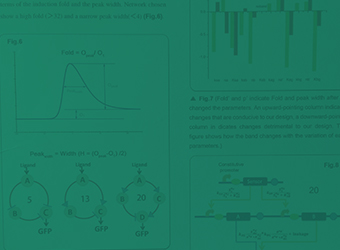Team:Peking
From 2013.igem.org
Spring zhq (Talk | contribs) |
Spring zhq (Talk | contribs) |
||
| Line 302: | Line 302: | ||
<h1 class="AppendixHeadLine">Biosensors</h1> | <h1 class="AppendixHeadLine">Biosensors</h1> | ||
<img id="Appendix2Icon" class="AppendixIcon" src="https://static.igem.org/mediawiki/igem.org/b/b2/Peking2013_home_appendix2icon.png" /> | <img id="Appendix2Icon" class="AppendixIcon" src="https://static.igem.org/mediawiki/igem.org/b/b2/Peking2013_home_appendix2icon.png" /> | ||
| - | <p>A comprehensive set of biosensor circuits has been genetically implemented using the aromatics-sensing transcriptional regulators. Each of these biosensor has a specific aromatics-sensing profile. Furthermore, the orthogonality/crosstalk of their detection profiles was carefully examined.</p> | + | <p>A comprehensive set of biosensor circuits has been genetically implemented using the aromatics-sensing transcriptional regulators. Each of these biosensor has a specific aromatics-sensing profile. Furthermore, the orthogonality/crosstalk of their detection profiles was carefully examined for practical applications.</p> |
<a href="">LEARN MORE</a> | <a href="">LEARN MORE</a> | ||
</div> | </div> | ||
Revision as of 11:52, 24 September 2013


Aromatics Scouts
A Comprehensive Biosensor Toolkit to Profile Aromatics in the Environment

Monitoring aromatic compounds in the environment remains a substantial challenge today. Noting the power of biosensors for quick and convenient testing, Peking iGEM has developed a functionally comprehensive biosensor toolkit to profile aromatics in the environment.
Transcriptional regulators that each senses a specific class of aromatics were first bioinformatically determined; they were then utilized to build a comprehensive set of biosensor circuits. Characterization on the detection profiles of individual biosensors and their orthogonality/crosstalk prove that these biosensors are really high-performance to profile aromatics in water.
Moreover, for the ease of practical applications, two types of genetic devices were also developed as plug-ins for biosensors: "Adaptors", a set of conceptually novel devices to convert undetectable chemicals into detectable aromatics, and "Band-pass Filter", a "concentration filter" that allows the detection of analyte concentration within a specific range.
We expect that these novel biosensors, together with the plug-in devices, will serve as intriguing synthetic biological tools for diverse practical applications.
Mining aromatics-sensing Biobricks
from the genomic database

Sensor Mining
The core component of our biosensor toolkit is the transcriptional regulators that sense aromatic compounds. For the comprehensiveness of aromatics-sensing, a data-mining process was conducted to mine transcriptional regulators for each typical class of aromatic compounds from the database Uniprot.
LEARN MOREHigh-performance, profile-
specific biosensors

Biosensors
A comprehensive set of biosensor circuits has been genetically implemented using the aromatics-sensing transcriptional regulators. Each of these biosensor has a specific aromatics-sensing profile. Furthermore, the orthogonality/crosstalk of their detection profiles was carefully examined for practical applications.
LEARN MOREConvert the undetectable into
the detectable
Rapidly tell the concentration
of the analyte
Resonate to bridge the gap
between minds

 "
"




